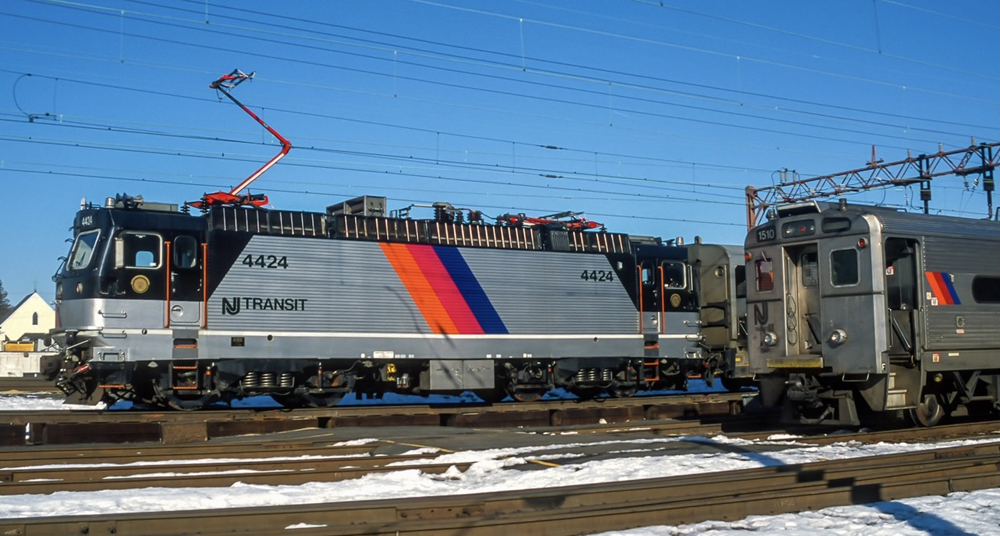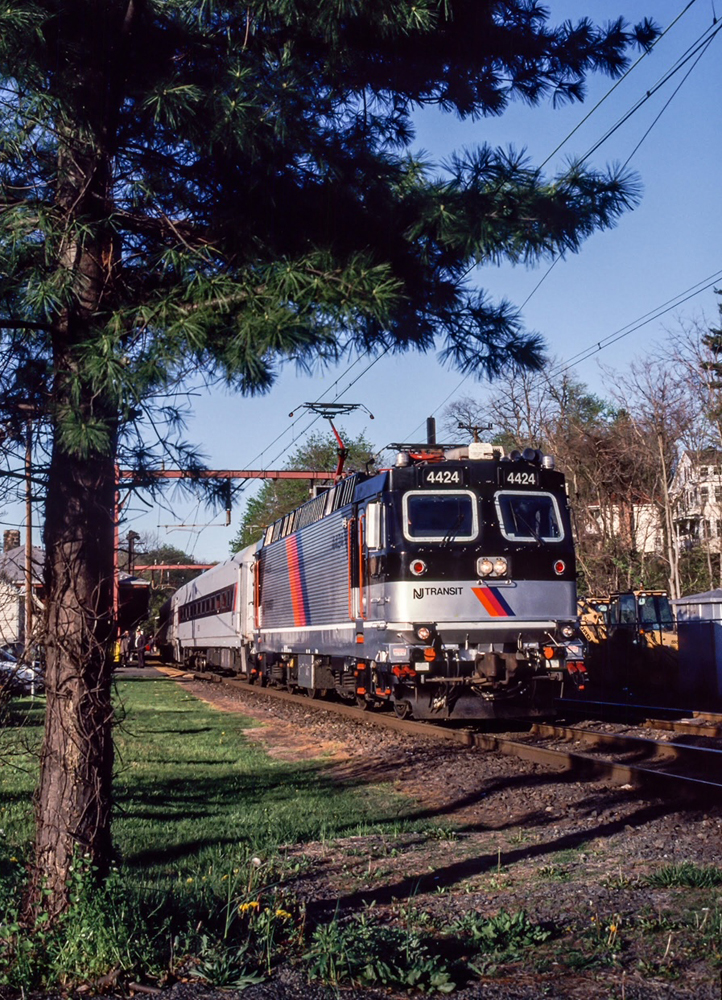
BOONTON, N.J. — NJ Transit has donated ALP-44M electric locomotive No. 4424 to the United Railroad Historical Society of New Jersey for preservation, the URHS has announced.
The first public display following the donation, made by NJ Transit to commemorate its 40th anniversary, will be Sept. 24 at the URHS Railroad Museum [For A Day] festival in Boonton.

No. 4424 is one of 32 ALP-44s built in Sweden by Asea Brown Boveri between 1989 and 1997, and represents both the first electric locomotives purchased new by the state of New Jersey and the first time the agency had purchased internationally. The M in its model designation indicates that it is from the final group purchased, which were computer-controlled by microprocessors. Built in 1996, the locomotive is the youngest piece of equipment in the URHS collection.
“It may be young, but that doesn’t make this locomotive any less historic,” Kevin Phalon, URHS executive director, said in a press release. “This locomotive helps us complete the story of railroading in New Jersey. New Jersey is the birthplace of the railroad industry, and is, in many ways, the birthplace of the commuter. In the early 20th century, eight competing railroads made up one of the most robust commuter rail systems in America. By the 1960s, every single one of them had gone bankrupt. The state then took the remnants of those railroads and combined them into one, cohesive commuter rail system. The ALP-44 was an integral part of the infrastructure that brought all of these systems together.”
The ALP-44s operated until 2011 on NJ Transit’s Morris & Essex, Gladstone, Montclair-Boonton, and Northeast Corridor lines. They could generate up to 7,000 hp and reach speeds up to 125 mph.
“We appreciate all the labor of love that URHS performs to preserve New Jersey’s significant rail history,” said NJ Transit CEO Kevin S. Corbett. “This special donation will be a living testament to the hard work of our Rail Operations team over the last 40 years, and I look forward to visiting locomotive No. 4424 early and often during the next 40 years as well.”
No. 4424 was chosen for donation as it was deemed to be in the best condition for preservation of the remaining units. It will come to URHS in near-complete, original condition.
The Railroad Museum [For A Day] event will be held at URHS Restoration Facility in Boonton. Along with the ALP-44M, it will feature the public debut of newly restored Erie Lackawanna U34CH No. 3372. More information on the event is available here. For more on URHS, visit its website.














I’ll bet the transformer has been remove to keep NJT safe from liability issues just like Amtrak did to the GG1’s and the E44 saved for display in museums.
The “locomotive shortage” was not so much a locomotive shortage as a shortage of locomotives equipped with PTC (ACSES).
Both Amtrak and SEPTA wanted ACSES on their lines and their motors were all equipped prior to the deadlines. They were installing the on-track hardware as fast as the vendors could deliver it. This is how SEPTA had motors with ACSES in storage while NJT was operating motors without.
There was an intermediate FRA deadline coming up and NJT did not have a high enough percentage of equpped motors to meet it. So they leased equipped SEPTA motors, but did not use them. This allowed them to meet their percentage statistically. NJT stored he SEPTA motors at NJT’s Morrisville PA shop, meaning they never left Pennsylvania while leased to NJT. (they had operated to Trenton and West Trenton NJ in regular SEPTA service.)
New Jersey has always been and always will be a principal railroad state!
Dr. Güntürk Üstün
SEPTA received a single ALP-44M unit, #2308, from ABB, which was part of a damages settlement for a lawsuit stemming from the late delivery of N5 cars for the Norristown High Speed Line. It was replaced, along with the AEM-7s, with the ACS-64 in October 2018, with a farewell trip on December 1, 2018.
After the farewell, #2308, as well as seven AEM-7’s, were leased to NJ Transit to help alleviate a locomotive shortage due to positive train control installation on their locomotives. However, they were never used for New Jersey Transit and returned to SEPTA in May 2019. The AEM-7s and the ALP-44 were eventually reassigned to SEPTA work service until 2021. In February 2022, the AEM-7s and ALP-44 were withdrawn and sold off As of late 2022, all AEM-7s and the ALP-44 have been scrapped.
Dr. Güntürk Üstün
They had impressive starting tractive force. The way I was pressed back in my seat the first time I was on a train pulled by one will always be remembered.
New Jersey is the “birthplace” of the railroad industry? Don;t think it was the first.
Probably a reference to the Camden and Amboy Railroad.
I agree. Maryland has a better claim.
Maybe a reference to Stevens “loop of track” in Hoboken which predates the Camden and Amboy.
The ALP-44Ms were notorious for their faulty software, which frequently caused problems and kept them out of service for maintenance.
Dr. Güntürk Üstün
The United Railroad Historical Society of New Jersey, Inc. (or URHS of NJ) is a non profit educational organization directed at supporting the preservation of New Jersey’s historical railroad equipment and artifacts for the proposed New Jersey Transportation Heritage Center or in its absence, another railroad museum in New Jersey. In order to coordinate resources, representatives from most of New Jersey’s major railroad-interest organizations formed the URHS of NJ in 1987. URHS of NJ has been working toward rescuing potential items from scrapping and has been assisting in searching for the location of The New Jersey Transportation Heritage Center. The URHS of NJ expects to play a major role in its design, content and operation. The organization is located at 104 Morris Avenue in Boonton, NJ.
Dr. Güntürk Üstün
“Beau geste” from the beloved NJT!
Dr. Güntürk Üstün